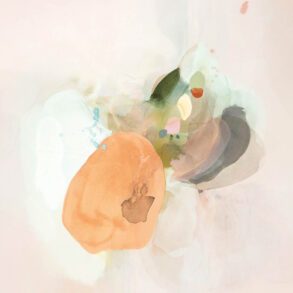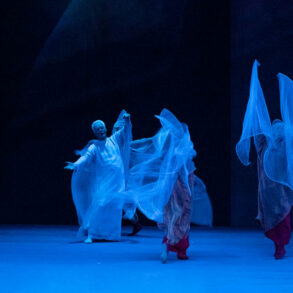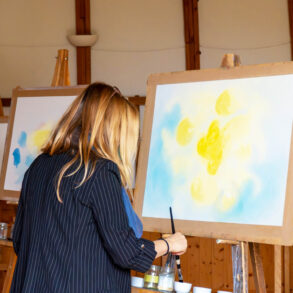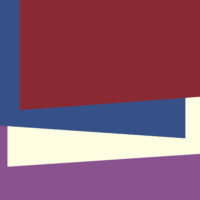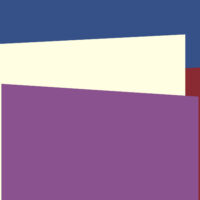Many years ago, I was talking to the wife of a colleague in the stairwell of the Rudolf Steiner House in Stuttgart. Something must have upset me because I was talking very enthusiastically and stuck my right hand out, pointing my finger at the woman listening. As the conversation went on, I became aware of my gesture, which I hadn’t consciously noticed before. The woman I was with had noticed it, and it was clear that I had then noticed it myself, because she had already incorporated it into her own consciousness.
This was one of my first experiences of different consciousnesses influencing one another directly, without a mediator (speech, etc.), simply through their shared space of consciousness. Perhaps you’ve also experienced this, for instance, in the Rückschau practice—the evening retrospective. We look back on our day and bring into our consciousness some event: a small breach in communication with a fellow human being, a question in relation to a pupil or a patient—and maybe we make some minor adjustment in our awareness of what happened. The next day, we then experience a change, consciously or unconsciously, when meeting this person again. It’s clear that the previous evening’s retrospective is somehow connected with this new awareness.
This leads us to consider that consciousness is not necessarily separated out, one consciousness from another, so that we all have our own consciousness, and they don’t overlap. But we can be glad that it does appear in some way to be separate. Everything that passes through my consciousness, thankfully, does not instantly take on some major world significance. And yet, the moment I begin to be a little more active in my consciousness than normal, I can start to observe how consciousnesses intertwine.
It’s important to mention, though, that consciousness is not something uniform—it is not the same everywhere. Steiner’s Occult Science: An Outline shows us this: “For suprasensible intuition, there is no ‘unconsciousness,’ only different degrees of consciousness. Everything in the world is conscious.”
Occult Science could be understood as a theory of consciousness: a treatise on human consciousness, which involves normal day consciousness, dream, and sleep consciousness; a treatise on cosmic consciousness, which, for example, has been described by narratives of near-death experiences; a treatise on consciousness in nature, which exhibits different degrees in stones, plants, and animals; a treatise on the consciousness of spiritual beings, which creates relationships between different consciousnesses and between degrees of consciousness in nature and in the human world and permeates the world creatively and effectively. Occult Science clarifies all these forms of consciousness: different in degree, yet all interwoven.
The fact that we humans can develop and expand our consciousness transforms the theory of consciousness in Occult Science into the experience of consciousness. We develop our experience of consciousness by actively engaging with it through concentration and meditation. (other major themes in Occult Science). Consciousness then frees itself from the object world and begins to experience itself as full of force, as activity. Consciousness becomes a fact of the world; it’s no longer experienced simply as “my” consciousness. I immerse myself in the multi-layered world of consciousness, and perhaps—with a certain spiritual tact—can even become effective. I can learn to change moods, modify formative forces, and help redeem my own or someone else’s double. Steiner describes these higher forms of consciousness, which need to be developed further in the future, as Imagination, Inspiration, and Intuition.
Compared to the study of consciousness done in academia, Steiner develops an enormously expanded concept of consciousness. But it does overlap with academic research, for example, with the descriptions of the sentient soul and intellectual soul. Academic research calls the sentient soul, the “phenomenal consciousness.” This involves experiences that are only inferred, not observed directly. The philosopher Thomas Nagel summarized this with the question: “What is it like to be a bat?” What does a bat experience when it flies around with its echolocation through the night? We don’t know. Just as we can’t observe what a fellow human being experiences when they see a specific color. There always remains an unknown. In articulating consciousness more precisely, Steiner says, “the being experiences something inwardly which is added on to the mere reaction as something new” [Occult Science, Ch. 2]. This “something new”—pain, joy, qualitative experience—remains within, in consciousness, in both animals and humans.
These new experiences are then reflected upon and questioned by the intellectual soul. Steiner explains: “This is the activity through which the ‘I’ detaches itself more and more from the objects of perception in order to work on its own property.” In philosophy, this form of consciousness has been referred to for centuries as “intentional consciousness,” and in academic research as “second-order consciousness.” Occult Science goes on through the most varied degrees of human and non-human consciousness, which don’t yet have equivalents in academic research. Why has this remained between the covers of Occult Science and in the relatively small circles of anthroposophy? Why has no one tried to intervene in and expand academic research from out of Occult Science? There is such a great need to get out of the narrowness of the consciousness of the intellectual soul and the reductionism associated with it that only recognizes the physical and everyday object consciousness. Perhaps we just need to shift the focus a little and see Occult Science not as a difficult introduction to esoteric topics, but as a theory of consciousness, our own and the consciousness throughout the world. So, for the next hundred years, there’s plenty to do!
Event
Rudolf Steiner lesen und verstehen [Reading and understanding Rudolf Steiner]: Conference of the Section for the Literary Arts and Humanities at the Goetheanum, May 1–4, 2025, with Andre Bartoniczek, Anna-Katharina Dehmelt, Ariane Eichenberg, Volker Frankfurt, Eckart Förster, Christiane Haid, Jaap Sijmons, and Renatus Ziegler.
More Section for the Literary Arts and Humanities
See also an essay with the same name in Anna-Katharina Dehmelt, Kreuz und Rose [Cross and rose] (Stuttgart: Verlag Freies Geistesleben, 2023).
Translation Joshua Kelberman




